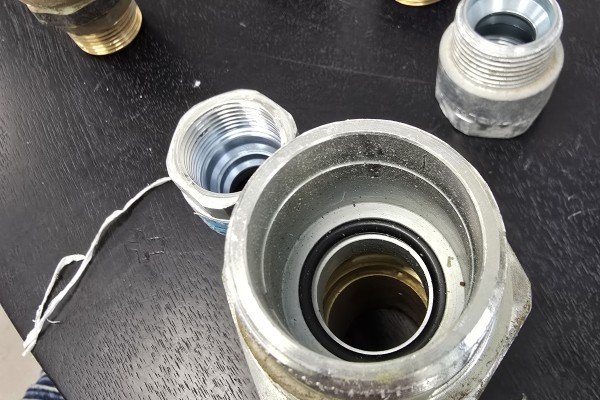Excess flow valves

Following numerous instances where a multi-layer pipe has failed due to building fires, Paul Makrievski explores what the new changes to AS/NZS 5601.1:2022 will mean for plumbers.
Back in September 2022, new changes relating to fire emergency isolation came into effect with the revised AS/NZS 5601.1:2022 Gas Installation Part 1: General installation standard.
The new changes introduced the requirement to install fire emergency isolation for all gas installations that contain multi-layer pipe. The justification for the introduction of the new requirement was due to multi-layer pipe experiencing premature failure at elevated temperatures compared to more traditional piping systems, such as copper.
Energy Safe Victoria, along with other state regulators, investigated numerous instances where multi-layer pipe has failed due to building fires, including incidents with fatal consequences.
Evidence showed that fires in buildings where multi-layer pipe had been compromised would accelerate the spread of fire within a structure and reduce the time available for occupants to safely evacuate.
This evidence was further confirmed by testing that was commissioned by Energy Safe Victoria in the United Kingdom to the European Standard EN1775. As a result of the changes in AS/NZS 5601.1:2022, all new gas installations and modifications to existing gas installations that contain multi-layer pipe require automatic isolation of the gas supply in the event that a fire occurs.
There were a number of different options made available to industry in order to comply with the new requirements, one of which was the installation of excess flow valves for residential buildings (Class 1a). Local testing was also completed by Energy Safe Victoria with manufacturers of these valves, infrastructure suppliers and multi-layer pipe manufacturers.
The introduction of excess flow valves into gas installations got off to a rocky start with many gasfitters unclear on how to install them, which type to use and how to purge and commission the installation appropriately. This led to a subsequent amendment to the standard in September 2024 to clarify a few additional points when installing excess flow valves.
All these changes are designed to make the gas installation safer. However, conversations between the Building and Plumbing Commission and Energy Safe Victoria have highlighted that there are some gasfitters who have been tampering with the excess flow valves, effectively rendering them useless.
In some instances, the internals of the valve have been completely removed prior to installation. These installed valves provide absolutely no protection to the gas installation, representing a complete failure of safety systems and leaving the installation entirely vulnerable to catastrophic failure. It is critical to remember that these devices are intended to give occupants precious time to escape in the event of a fire.
This represents a serious and growing concern that demands immediate industry attention and action. Tampering with excess flow valves is completely unacceptable and constitutes a clear breach of safety regulations that render the installations non-compliant and create unsafe conditions in a fire. In Victoria, the Building and Plumbing Commission has identified several sites where tampered excess flow valves have been installed.
Issues with purging through an excess flow valve appear to be a major reason behind the drive to tamper with the device. When purging with an excess flow valve(s) in the gas installation, the valve(s) may trip in the closed position during the purging process when the flow rate exceeds the valve(s) operating capacity. If a valve does trip during the purging process, it doesn’t mean the valve has failed; it is designed to do just that.
To overcome this, it is critical to purge in a way that does not exceed the valve operating capacity; this will require a change in purging procedures to control the flow rate whilst purging.
In other instances, found by Energy Safe and Building and Plumbing Commission, the excessive use of quick-setting thread compound has caused the internal valve body to seize in a position that renders the valve ineffective.
This is a reminder to be cautious when using quick-setting thread compound so that you do not use more than is necessary, and to also ensure excess compound does not accumulate within the valve itself. If it has become evident that this is occurring, you will need to change your installation methods to ensure the operation of the excess flow valve is not negatively impacted.
Excess flow valves are just one of several ways to achieve compliance with the gas installation standard and if the installation is designed, sized and installed correctly are very effective. There are alternative options available to achieve compliance and consideration may need to be given at the start of a project to determine the best option for each gas application.
It is imperative to remember that excess flow valves are a safety device used to protect people in the event of a fire.
Energy Safe Victoria has developed further guidance material for multi-layer pipe installations that can be found at energysafe.vic.gov.au.
